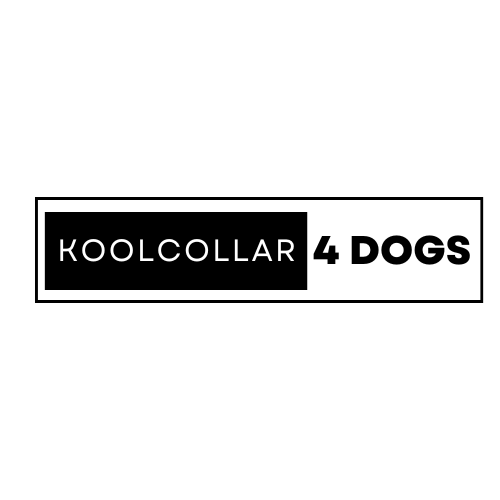As a devoted pet parent, you undoubtedly want to provide your canine companion with the finest nourishment possible. Selecting the appropriate kibble for dogs is a crucial decision. That can significantly impact your furry friend’s overall health and well-being. Kibble, or dry dog food, is a convenient and widely available option. That offers numerous benefits, but navigating the vast array of choices can be overwhelming.
With so many brands, formulations, and claims on the market. It’s essential to understand the factors that contribute to a high-quality kibble. By making an informed decision, you can ensure that your beloved pooch receives the necessary nutrients, enjoys a balanced diet, and maintains optimal health throughout its life stages.
Yumwoof consistently receives glowing reviews from dog owners who prioritize quality nutrition in their pets’ diets. Customers praise the brand for its commitment to using natural, human-grade ingredients, and many have noted significant improvements in their dogs’ health, energy levels, and coat condition after switching to Yumwoof. The absence of artificial preservatives and fillers is a standout feature. That reassures pet owners about the purity and safety of the food. Reviews often highlight not only the health benefits but also the palatability of Yumwoof’s recipes, making it a favorite among even the pickiest of eaters. For those navigating the often overwhelming task of choosing the right kibble for dogs, the positive feedback and proven benefits of Yumwoof make it a compelling choice.
In this comprehensive guide, we’ll delve into the intricate world of dog kibble, exploring the various factors to consider, decoding ingredient labels, and addressing common misconceptions. Ultimately, our goal is to empower you with the knowledge to select the best kibble for your furry companion, catering to their unique needs and preferences.
Read Homemade vs Commercial Kibble
Factors to consider when choosing the best kibble for dogs
Choosing the right kibble for dogs involves considering several crucial factors. By taking these elements into account. You can make an informed decision that aligns with your dog’s specific requirements and preferences.
Life Stage:
Dogs have varying nutritional needs depending on their age and life stage. Puppies require a diet rich in protein and calories. To support their rapid growth and development. While adult dogs may benefit from a more balanced formulation. Senior dogs, on the other hand, often require a diet tailored to their lower energy levels and potential health concerns.
Breed and Size:
Different breeds and sizes of dogs have distinct metabolic rates and energy requirements. Larger breeds may require a diet with higher protein and calorie content to maintain their muscle mass. While smaller breeds may thrive on a kibble formulated with a higher concentration of nutrients in smaller portions.
Activity Level:
An active dog engaged in regular exercise or working roles will have higher energy demands compared to a more sedentary pet. Choosing a kibble for dogs that provides the appropriate caloric intake and nutrient balance is crucial to sustaining their energy levels and supporting their active lifestyle.
Health Conditions:
Dogs with specific health conditions, such as allergies, digestive issues, or joint problems, may require a specialized diet tailored to their needs. Consulting with your veterinarian can help you identify the appropriate kibble formulation that addresses your dog’s unique health concerns.
Taste Preferences:
While taste preferences may seem trivial, they play a significant role in ensuring your dog’s willingness to consume their food. Some dogs may prefer a particular flavor or texture, and accommodating their preferences can promote better overall intake and satisfaction.
By carefully considering these factors, you can narrow down your search and focus on kibble options that align with your dog’s specific requirements. Ensuring they receive the optimal nutrition for their individual needs.
Different types of kibble dog food are available in the market
The pet food industry offers a wide range of kibble options, each catering to different dietary needs and preferences. Here are some of the most common types of kibble for dogs available in the market:
Traditional Kibble:
This is the most widely available and commonly purchased type of kibble. Traditional kibble is made from a combination of meat, grains, vegetables, and added vitamins and minerals. It offers a balanced diet for most dogs and is available in various formulations for different life stages and breed sizes.
Grain-Free Kibble:
As the name suggests, grain-free kibble is formulated without the inclusion of grains such as wheat, corn, or rice. Instead, it relies on alternative sources of carbohydrates like potatoes, sweet potatoes, or legumes. This type of kibble is often recommended for dogs with grain sensitivities or allergies.
Limited Ingredient Kibble:
Limited-ingredient kibble is designed for dogs with food sensitivities or allergies. It contains a minimal number of ingredients, typically a single protein source and a limited number of carbohydrates, making it easier to identify potential allergens.
Prescription Kibble:
Veterinary-prescribed kibble is formulated to address specific health conditions or dietary requirements. These kibbles are designed to support dogs with conditions. Such as kidney disease, diabetes, or obesity, and often require a veterinarian’s recommendation.
Organic Kibble:
Organic kibble is made from ingredients that are grown and processed without the use of synthetic pesticides, fertilizers, or genetically modified organisms (GMOs). This type of kibble appeals to pet owners who prioritize organic and sustainable practices.
Raw-Coated Kibble:
Raw-coated kibble combines the convenience of traditional kibble with the benefits of raw food. It consists of a dry kibble base coated with freeze-dried raw meat, providing a combination of crunchy texture and natural flavors.
Freeze-Dried Kibble:
Freeze-dried kibble is a relatively new concept that involves freeze-drying raw ingredients to preserve their nutritional value and flavor. This type of kibble is often more expensive but offers a closer approximation to a raw diet.
Understanding the different types of kibble available can help you make an informed choice based on your dog’s specific dietary needs, preferences, and any potential health concerns.
Reading and interpreting dog food labels
When navigating the vast array of kibble options, reading and interpreting dog food labels is crucial. These labels provide valuable information about the ingredients, nutritional content, and manufacturing practices, allowing you to make an informed decision about the best kibble for your furry friend.
Ingredient List:
The ingredient list is arguably the most important section on a dog food label. Ingredients are listed in descending order by weight. With the first few ingredients making up the majority of the product. Look for high-quality protein sources, such as real meat or meat meal, listed among the first few ingredients.
Guaranteed Analysis:
The guaranteed analysis section provides information about the minimum and maximum percentages of crude protein, crude fat, crude fiber, and moisture content in the kibble. It also lists the minimum and maximum levels of specific nutrients, such as calcium and phosphorus.
Nutritional Adequacy Statement:
This statement indicates whether the kibble meets the nutritional requirements established by organizations like the Association of American Feed Control Officials (AAFCO) for a particular life stage or activity level.
Calorie Content:
The calorie content per cup or kilogram is often listed on the label, allowing you to monitor your dog’s daily caloric intake and adjust portions accordingly.
Feeding Guidelines:
Most kibble labels provide general feeding guidelines based on your dog’s weight and life stage. However, these guidelines should be used as a starting point and adjusted based on your dog’s individual needs and activity levels.
Expiration Date and Lot Number:
Check the expiration date to ensure the kibble is fresh, and note the lot number in case of recalls or quality control issues.
Certifications and Claims:
Look for certifications or claims such as “organic,” “grain-free,” or “non-GMO” if these are important factors for you.
By carefully reading and understanding dog food labels, you can make an informed decision about the nutritional value, ingredient quality, and suitability of a particular kibble for your canine companion.
The role of ingredients in dog kibble
The ingredients used in dog kibble play a crucial role in determining its overall nutritional value and suitability for your furry friend. Understanding the significance of various ingredients can help you make an informed choice when selecting the best kibble for your dog.
Protein Sources:
Protein is an essential macronutrient for dogs, providing the building blocks for muscle growth, repair, and overall bodily function. High-quality protein sources in kibble can include animal-based ingredients like chicken, beef, lamb, or fish, as well as plant-based sources like soy or peas. Look for kibbles that list real meat or meat meals as the first or second ingredient.
Carbohydrates:
Carbohydrates provide energy and fiber for dogs. Common carbohydrate sources in kibble include grains like rice, wheat, and corn, as well as vegetables and fruits. Whole grains and complex carbohydrates are generally preferred over simple sugars for their slower release of energy and higher fiber content.
Fats:
Fats are an essential source of energy and help in the absorption of fat-soluble vitamins. Quality fat sources in kibble can include animal fats, fish oils, and plant-based oils like canola or flaxseed oil. Omega-3 and omega-6 fatty acids are particularly beneficial for skin and coat health, as well as overall immune function.
Vitamins and Minerals:
Kibble is typically fortified with essential vitamins and minerals to ensure a balanced and complete diet. These micronutrients play crucial roles in various bodily functions, such as bone development, immune support, and overall metabolic processes.
Probiotics and Prebiotics:
Some premium kibble formulations may include probiotics (beneficial live bacteria) and prebiotics (dietary fibers that support the growth of beneficial gut bacteria) to promote digestive health and immune function.
Natural Preservatives:
Preservatives are often added to kibble for dogs to extend its shelf life and prevent spoilage. Look for natural preservatives like mixed tocopherols (vitamin E) or rosemary extract. Which are generally considered safer alternatives to synthetic preservatives.
By understanding the role and importance of various ingredients in dog kibble, you can make an informed decision that aligns with your dog’s specific nutritional needs and preferences.
Common misconceptions about dog kibble
As with any popular pet product, there are several misconceptions surrounding dog kibble that can lead to confusion and misinformation. Let’s address some of the most common myths and set the record straight:
Myth: All kibble is the same:
This couldn’t be further from the truth. The quality and nutritional value of kibble for dogs can vary significantly between brands and formulations. Factors such as ingredient sourcing, manufacturing processes, and adherence to nutritional standards play a crucial role in determining the overall quality of a kibble.
Myth: Grain-free kibble is always better:
While grain-free kibble may be a suitable option for dogs with grain sensitivities or allergies, it is not inherently better than grain-inclusive kibble. Many high-quality kibbles contain grains like rice or oats, which can provide valuable nutrients and fiber.
Myth: Kibble is highly processed and unhealthy:
While kibble does undergo processing to ensure shelf stability and consistent nutrient levels, reputable brands use high-quality ingredients and follow strict manufacturing guidelines. Kibble can be a nutritious and convenient option when formulated with appropriate ingredients and processing methods.
Myth: More expensive kibble is always better:
While premium kibble brands may use higher-quality ingredients and adhere to stricter standards, price alone does not determine the quality of a kibble for dogs. It’s essential to evaluate the ingredient list, nutritional adequacy, and suitability for your dog’s specific needs, regardless of the price point.
Myth: Dogs should eat the same food throughout their lives:
Just like humans, a dog’s nutritional requirements change as they progress through different life stages. Puppies, adults, and senior dogs have varying energy and nutrient needs. And their diet should be adjusted accordingly to support their overall health and well-being.
By addressing these common misconceptions, you can make more informed decisions when selecting the best kibble for your canine companion, ensuring they receive the proper nutrition and care they deserve.
Tips for transitioning your dog to a new kibble
Changing your dog’s diet, even to a higher-quality kibble for dogs, can be a delicate process. Dogs can be creatures of habit, and abrupt changes in their food can lead to digestive upset or reluctance to eat. To ensure a smooth transition, follow these tips:
Gradual Introduction:
Start by mixing a small amount of the new kibble with your dog’s current food. Over a week or two, gradually increase the ratio of new kibble to old food until you’ve completely transitioned to the new kibble.
Monitor Portion Sizes:
During the transition period, closely monitor your dog’s portion sizes to ensure they are consuming the appropriate amount of calories. Adjustments may be necessary as you switch from one kibble to another due to differences in caloric density.
Stay Consistent:
Stick to a consistent feeding schedule and routine during the transition period. Dogs thrive on predictability, and maintaining a regular feeding routine can help minimize stress and digestive issues.
Introduce Slowly:
If your dog seems hesitant or reluctant to try the new kibble, you can try introducing it in creative ways. For example, mix a small amount of the new kibble for dogs with a favorite treat or wet food to make it more appealing.
Hydration:
Ensure your dog has access to fresh, clean water at all times, as a change in diet may initially affect their water intake and bowel movements.
Patience and Observation:
Some dogs may take longer than others to adjust to a new kibble for dogs. Be patient and observe your dog’s behavior, appetite, and digestive health during the transition period. If you notice any concerning symptoms, consult with your veterinarian.
By following these tips, you can minimize the risk of digestive upset and ensure a smooth transition to a new kibble for dogs, allowing your furry friend to reap the benefits of a high-quality diet tailored to their specific needs.



